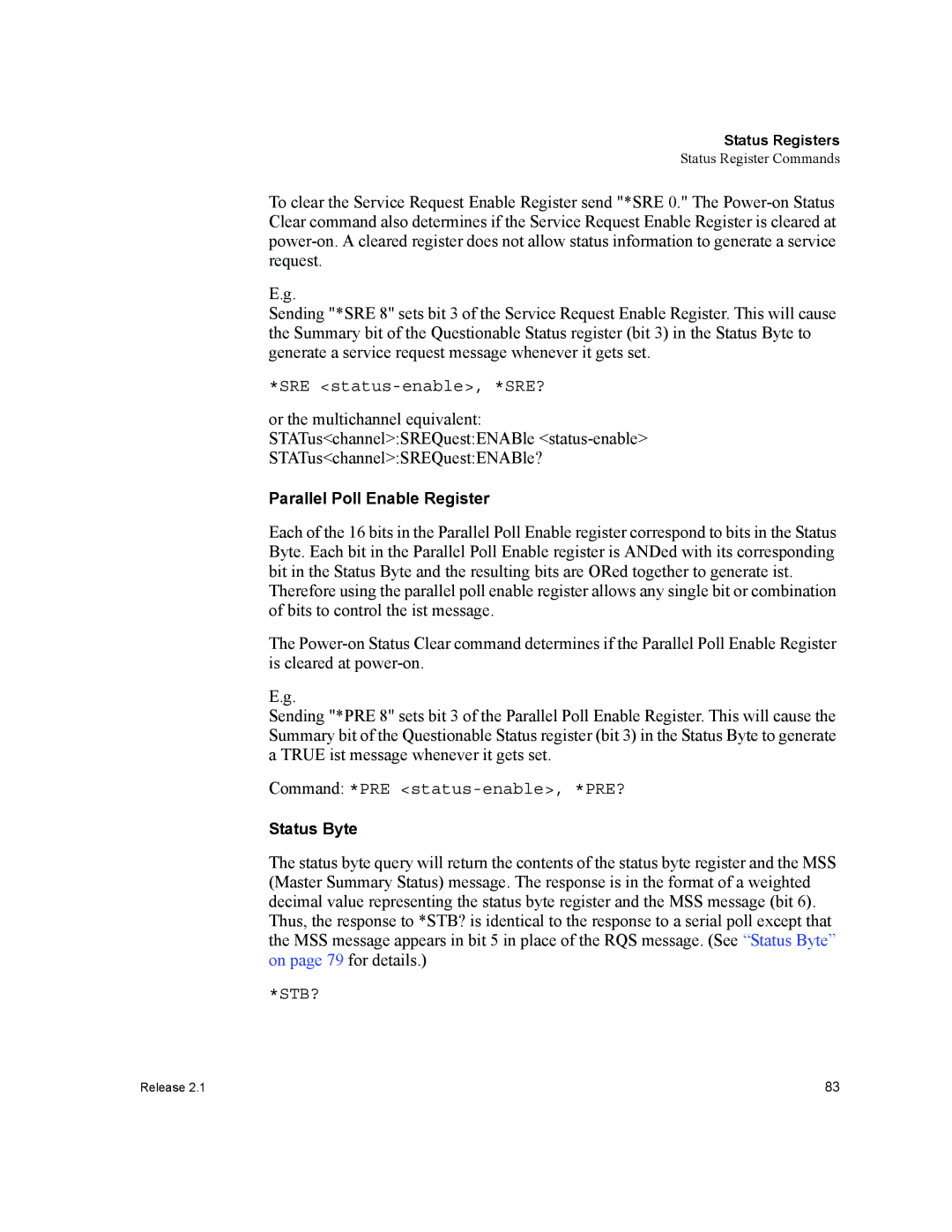Status Registers
Status Register Commands
To clear the Service Request Enable Register send "*SRE 0." The
E.g.
Sending "*SRE 8" sets bit 3 of the Service Request Enable Register. This will cause the Summary bit of the Questionable Status register (bit 3) in the Status Byte to generate a service request message whenever it gets set.
*SRE
or the multichannel equivalent: STATus<channel>:SREQuest:ENABle
Parallel Poll Enable Register
Each of the 16 bits in the Parallel Poll Enable register correspond to bits in the Status Byte. Each bit in the Parallel Poll Enable register is ANDed with its corresponding bit in the Status Byte and the resulting bits are ORed together to generate ist.
Therefore using the parallel poll enable register allows any single bit or combination of bits to control the ist message.
The
E.g.
Sending "*PRE 8" sets bit 3 of the Parallel Poll Enable Register. This will cause the Summary bit of the Questionable Status register (bit 3) in the Status Byte to generate a TRUE ist message whenever it gets set.
Command: *PRE
Status Byte
The status byte query will return the contents of the status byte register and the MSS (Master Summary Status) message. The response is in the format of a weighted decimal value representing the status byte register and the MSS message (bit 6). Thus, the response to *STB? is identical to the response to a serial poll except that the MSS message appears in bit 5 in place of the RQS message. (See “Status Byte” on page 79 for details.)
*STB?
Release 2.1 | 83 |
